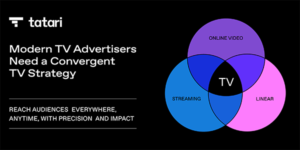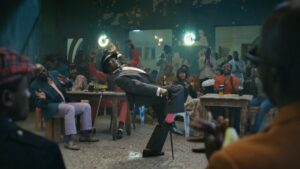Dwayne Wade is a basketball legend, and Budweiser just cashed in. Bigtime.
If you don’t know who he is, Dwayne Wade was one of the best basketball players of this generation. He’s a 3-time NBA champion, 11-time All-Star, and will be a unanimous, first-round hall-of-famer.
For the past few months before his retirement, he’s been swapping jerseys with other NBA legends, and the jersey swap after every game has produced some touching moments.
(Yes, I specifically chose this picture because I’m a huge fan of the Utah Jazz and Donovan Mitchell).
Before Wade’s last game and final jersey swap, Budweiser surprised him with 5 different guests, each of whom had a “jersey” to swap.
If you haven’t seen the ad from Budweiser, start cutting your onions. This commercial is a tear jerker:
As long as your tears aren’t causing temporary blindness, you may have noticed the Budweiser logo in the background.
Because Budweiser has built a strong brand, they have the flexibility to do advertising that says NOTHING about beer. Wade isn’t holding a beer and he doesn’t mention Budweiser.
This is just a feel-good message that they slap their logo on.
This video, which racked up over 4 million views in the first 48 hours, is a huge conversation starter for a brand that has some serious obstacles to overcome (beer continues losing market share, and recently, for the first time since the ’70s, Budweiser was knocked off the list of the three best selling beers).
I don’t drink beer, and I honestly think the world is a better place with less beer in it, but I have to give credit where credit is due: this is a great ad and is a huge branding win for Budweiser.
This ad could be categorized as 100% branding and 0% direct response. There’s no call-to-action and no “next step” that we see with direct response ads.
The Opposite Approach
I want to contrast the Budweiser ad with one from the other side of the spectrum. This ad for Gotham Steel frying pans is a stereotypical infomercial:
Cheesy? Yes. Pushy? Probably.
But it did a great job of showcasing a frying pan that can take abuse from metal forks, knives, and mixers, WITHOUT SCRATCHING. After taking all this abuse, other non-stick pans would be ruined, but this one still looks new, and food slips effortlessly from the pan to the plate.
Sounds amazing, right? I bought the pan.
Which Approach is Better?
I can already hear both sides of the argument. Direct response marketers would dissect the Budweiser ad:
- “You can’t measure its impact.”
- “It’s an expensive, long-term play.”
- “I would go bankrupt if I made an ad like this.”
On the other side of the spectrum:
- “Infomercials are gross.”
- “I wouldn’t want that associated with my brand.”
- “That’s not how I would want to be remembered.”
Look, I get both sides of the argument. Each end of the spectrum has its own pros and cons. But from my perspective, why can’t we acknowledge that there is a time and a place for both styles of ads?
A young company that needs immediate cash to stay alive does not have the luxury of making long-term branding plays. They have to get sales now. I don’t fault them for using direct-response ads to get those sales.
A well-established brand has more flexibility. They usually have far-reaching distribution and healthy market share. They can afford to play the long game. They can focus on building a long-term brand that we remember, love, and trust.
It’s a Timeline, Not an Either-Or Decision
I believe all marketers would be better served if they stopped thinking about Direct Response vs Traditional Branding as an either-or decision. Instead, we should think about it as a timeline. We have to think about short-term profitability while our companies are young and fragile. But we should all have the goal to build a strong, beloved brand. We should be moving across the spectrum from direct response to traditional branding as our companies mature.
Snuggie and Sham-Wow both saw themselves as Direct Response companies. They stayed in that world and never progressed across the spectrum and thus they failed to create strong brands. I would argue that they’d still be relevant today if they had done so.
Pets.com, on the other hand, went straight to producing Superbowl ads thinking they could compete in the branding space. I’m sure there are many reasons for their failure, but I would argue that if they had focused on short-term profitability, and then slowly progressed into branding, they might still be around today.
We Help Companies Progress On the Timeline to Build Great Brands
In our recent Lume campaign, we used humor, a strong brand character, and for the first time in our history, a musical to help them create a campaign that brands AND sells:
At the time of this article, Lume’s campaign has racked up over 38M+ views on YouTube, Facebook, and Pinterest since December of 2018, and is helping Lume sell deodorant like hot cakes. (don’t put hotcakes in your pits). But it is also a huge step in their journey to build a memorable brand.
So, what’s the impact?
We can’t share exact numbers (we’d have to kill you), but Lume is on track to 10X their sales this year. They have an INCREDIBLE product and an amazing team. Lume now has an ad that sells, a character that’s lovable and relatable, and a brand that helps them stand out in a uniquely powerful way.
That’s the power of building a bridge between direct response and branding.
If you are looking to take your next step across the spectrum so you can build a stronger brand, we’d love to chat. Unless you’re a Houston Rockets fan. (The Jazz are facing the Rockets in the playoffs).
Well done, Budweiser, Gotham Steel, and Lume. You are all hitting it out of the park at your respective places on the timeline from direct response to traditional branding.
And congrats on an incredible career, Mr. Wade. I hope Donovan can channel some of your postseason magic.
-Benton Crane


